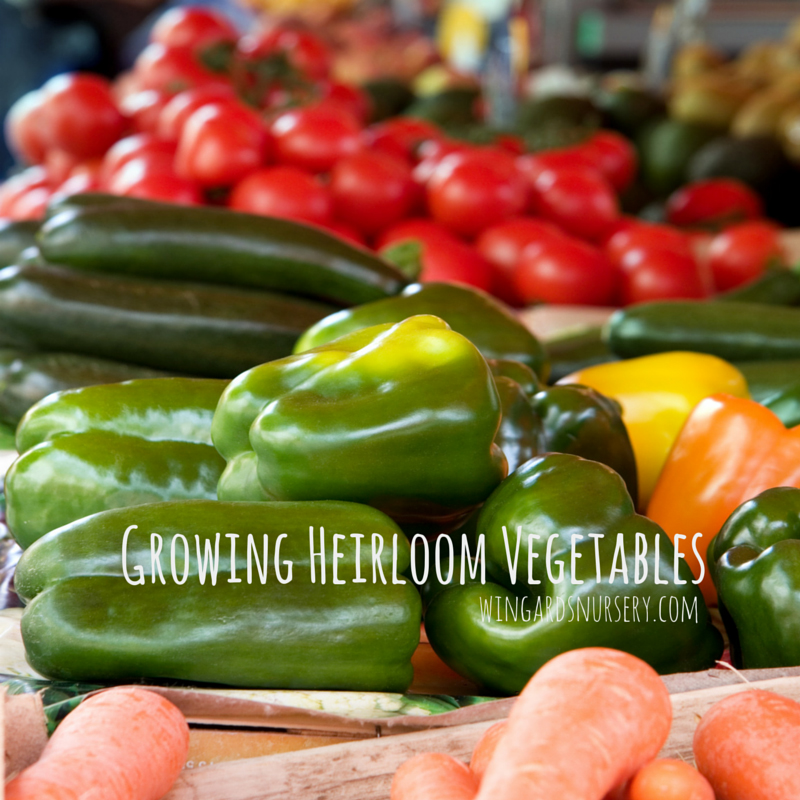Seeds Handed Down from Generation to Generation
Hopefully you have memories of the sweet taste of summer tomatoes, picked and enjoyed right in the middle of your grandparent’s garden. No store-bought hybrid, hot-house grown tomato can compare to the deep rich flavor of this summer fruit! The vegetables our grandparents grew were most likely from seeds handed down from generation to generation. Heirloom vegetables are indeed defined as ones that have been preserved over time. They also can be defined as any vegetable that has been grown for a certain length of time. However, they are specially categorized and their flavor is superior in taste and tenderness.
In recent decades fewer people saved seeds from year-to-year. They lost their connection to their heritage. Today, most vegetables are grown to please the consumer who prefers uniform shapes and the ability to purchase vegetables year-round throughout the country.
Heirloom seeds that have been open-pollinated in a particular region become adapted to the area’s soil, climate and pests. Many heirloom gardeners save money and avoid having to purchase new and expensive seeds each year. ( Hybrid seeds cannot be saved since they will not produce similar plants from year to year.)
The best seeds to save.
If you want to start your own seed bank, there are many self-pollinating seeds that produce plants like the parent plant. Here are a few that grow well in the South:
- Beans
- Peas
- Peanuts
- Lettuce
- Eggplant
- Peppers
- Tomatoes
Insects that visit your garden will cross pollinate your plants, so it is a good practice to plant them at least ten feet apart for varieties.
Certain vegetables that are pollinated by the wind need to be raised with at least a few hundred yards or more between them to preserve a true heirloom variety. Those vegetables are:
- Onion
- Cucumbers
- Corn
- Pumpkins
- Squash
- Broccoli
- Beets
- Carrots
- Cabbage
- Cauliflower
- Melons
- Radishes
- Spinach
- Swiss chard
- Turnips
If your garden space is small it is best to only grow one variety of each vegetable at a time to prevent cross-pollination that will alter a true heirloom vegetable.
Harvesting seeds.
After you have picked and harvested most of your fresh vegetables, be certain to save seeds from 3 or 4 of the healthiest plants. Allow your seeds to ripen fully on the plant before you harvest them.
To extend their storage life, only harvest your seeds on warm dry days. Bring them inside for their final drying time before storing them. Heirloom seeds have a shelf life of 3-5 years if stored properly. Place your dried seeds in glass jars with secure lids in a cool dry place.
According to Clemson University you can add diatomaceous earth to the seeds when storing them to help prevent insect damage. Also, if you store seeds in the refrigerator you can increase their life expectancy.
Before using seeds the following year, test for germination. Sprout seeds between moist paper towels; if germination is low, either discard the seeds or plant extra seeds to give the desirable number of plants.
Taste test.
Growing heirloom vegetables is becoming more popular as many gardeners are dissatisfied with the taste and quality of hybrid varieties. Although slightly more expensive than hybrid seeds, there is no need to ever purchase more than one packet of heirloom seeds of each variety you want to grow.
Heirloom seeds do have a few drawbacks. The mature vegetable will bruise more easily, and they can’t be stored as long, but their flavor is by far tastier than any hybrid you can grow.
In the long term, heirloom seeds produce a higher quality vegetable. Once you find the varieties that work best in your southern garden, treat your seeds like gold and you will always have a successful garden.
——————————————————————————————————————–
Here at Wingard’s we offer a variety of heirloom tomato plants throughout the growing season. Or, you can stop in and check our Fresh Produce Market for fresh heirloom tomatoes to take home and enjoy with your next meal. Click here for a list of some of the classic heirloom tomato varieties you may find during the summer months here at Wingard’s.
Are you new to Vegetable Gardening? Check out our collection of gardening videos.


